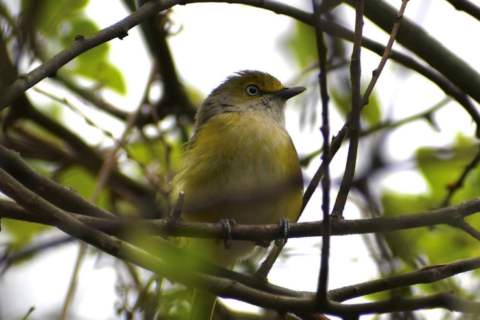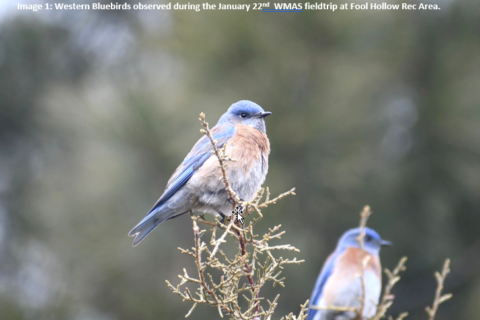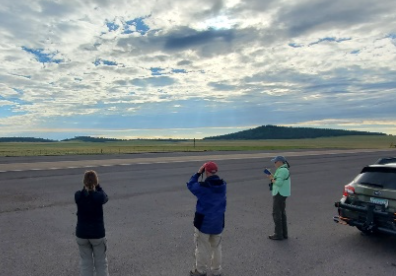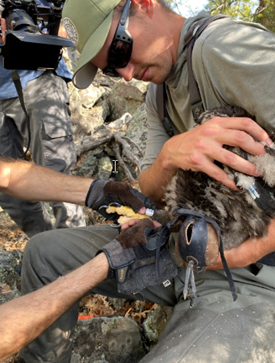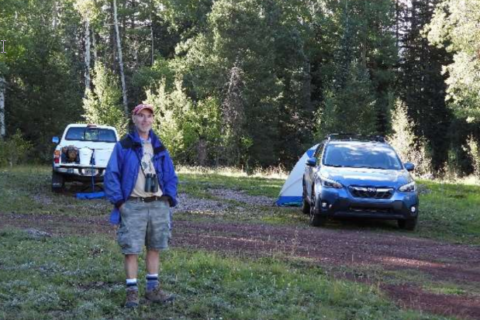By Sue Sitko
Let’s start with the “morals of the story,” which usually comes at the end: 1) cameras are ALMOST as important as binoculars; 2) a persistent birder can get answers; and 3) you, too, can do what we did.
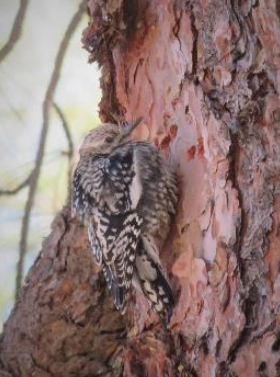
Now for the story. At the start of the new year, Ann Hilliard and I were birding the Lakeside Campground for this year’s Christmas Bird Count (CBC), and it was rather slow. Not many birds made an appearance. All of a sudden, Ann points out a sapsucker up in one of the large ponderosa pines that grace that special area. The markings suggested a female Williamson’s Sapsucker; both of us called it such, and we were happy that a Williamson’s, while logical and not terribly surprising but still not common, made an appearance right in front of us for the CBC. I start snapping away; backlit, it didn’t make for great photos. It then flew to another tree, where I snapped even more pictures in better light.
Williamson’s Sapsucker sexes are markedly different. The male, easy to identify, is a striking black, with a bit of lemon yellow on the belly, a long, white wing line on the outer coverts, with red facial markings. The female, however, is
black-and-tan barred almost all over, with a plain, buffy face with some slightly darker striping. The presence of a long, white wing line, to us, matched that of the male’s diagnostic marking, and we really didn’t think twice about our identification.
When home, it was time to compile our list to send to Mary Williams, our new Chapter President and the coordinator for the Timber Mesa CBC. I decided to check the field guide one more time to confirm our initial thoughts, and ran into this:
I sent off the images to Ann, and told her I believed we mis-identified the bird, that it was likely a juvenile Red-naped Sapsucker, the other common Arizona sapsucker present in our region. We submitted Red-naped Sapsucker to Mary for our CBC report.
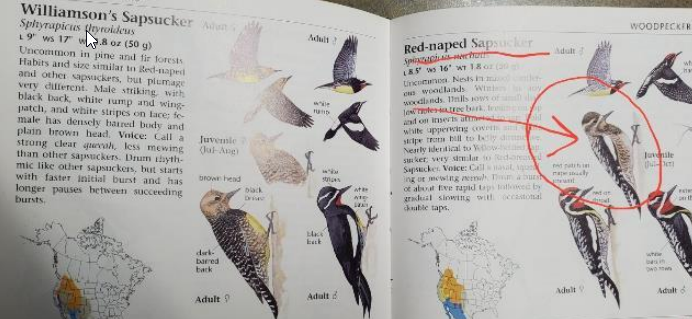
Life went on, until a few days later I received an e-mail from Mary, who often journals her bird sightings in e-mails sent to her birding colleagues and friends. I glanced through her reports, noting that she had observed a female Williamson’s Sapsucker at the Lakeside Campground, on or near that very same day Ann and I did. Hmmmm….there couldn’t be two similarly-marked birds at the Lakeside Campground around the same time, could there? Did I mistakenly change the identification from Williamson’s to Red-naped?
I e-mailed both Ann and Mary my photos and images from the Sibley field guide and the Ibird program. We went back and forth. Williamson’s? Red-naped? We sort of landed in the ballpark of female Williamson’s, mostly due to Mary’s input that a juvenile Red-naped likely would have molted into adult plumage by January.
But our dialogue was enough to really want to cement the identification, so I sent the same batch of images to Troy Corman, Eric Hough, and Carol Beardmore, three of the best bird experts in Arizona that I know personally.
The completely unexpected happened, with Troy responding with this: “When you see a juvenileplumaged sapsucker in winter, especially this late, it will most likely be a Yellow-bellied. They retain juvenile plumage through much of the winter, while most Red-naped juveniles molt into near adult plumage by late summer or early fall. They are rare, but regular in most of Arizona. This seemed to be an exceptional good fall and winter for them in the state. I found individuals on two different CBCs in December.”
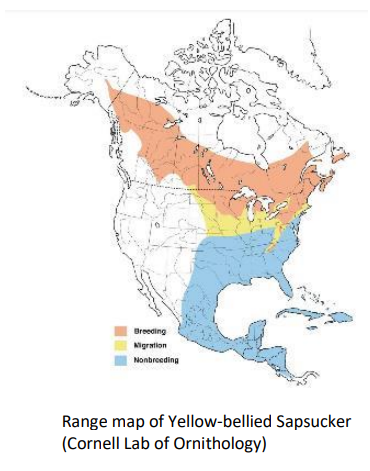
(Cornell Lab of Ornithology)
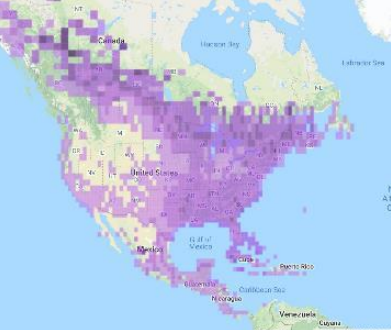
as reported on eBird
Well! It appeared part of the confusion and back-and-forth trying to identify the bird as either Williamson’s or Red-naped was that it was neither! It was a juvenile Yellow-bellied Sapsucker! And, to top it off, it was a bird that rarely shows up in Arizona. If you look at the range map for this species, it’s mostly an eastern U.S. bird. When I looked up records of this species in Arizona on eBird, there are several, including a handful in Navajo County. However, our Timber Mesa CBC now has a new species never before reported!
Back to the morals of the story:
1. Bring a camera! Cameras should be part and parcel of most birdwatching outings, if at all possible. Iuse a relatively inexpensive pocket-sized Canon Powershot, with a decent zoom (30x). Phone cameras are better than nothing, but generally don’t offer much in the way of zooming close enough to clearly see markings that may make or break a positive identification.
2. Persistence pays off. We were stumped, but kept going up the chain to discover something new.
3. You can do it too! Not sure of something? Ask! While you may not know the professionals like Troy, we have an excellent, skilled batch of birders right here with White Mountain Audubon. And if they’re puzzled as well, they know where to turn. Education is part of the mission of White Mountain Audubon, and we’re here for you!
RESOURCES MENTIONED IN ARTICLE:
Ibird: Cell phone application (app) includes identification, photos, range maps, audio, and other information on birds of North America. Found in all app stores (Google Play, Apple, etc.)
eBird: www.ebird.com as well as eBird cell phone application (app). eBird is an enormous global database of current and historical bird observations, populated by citizen birders, biologists, and ornithologists and curated and reviewed by volunteer and professional experts. Use eBird to record your field trips and sightings. A greatresource to find birds of interest in places around the world. If you’re going on a trip somewhere new, check eBird for birds you may see!
Sibley’s Field Guide to Western (and Eastern, and combined North American) Birds, multiple editions and
formats. Sibley’s also has a cell phone application.
Range map of Yellow-bellied Sapsucker (Cornell Lab of Ornithology)
Sightings of Yellow-bellied Sapsucker
as reported on eBird

